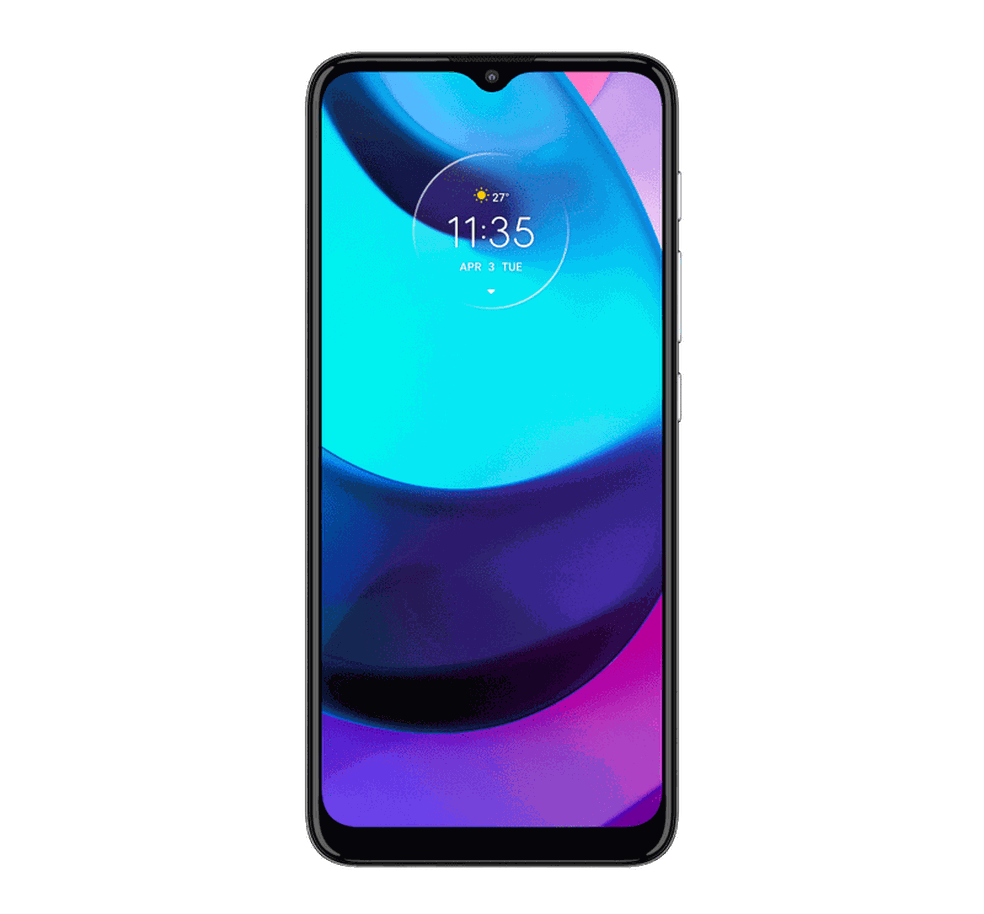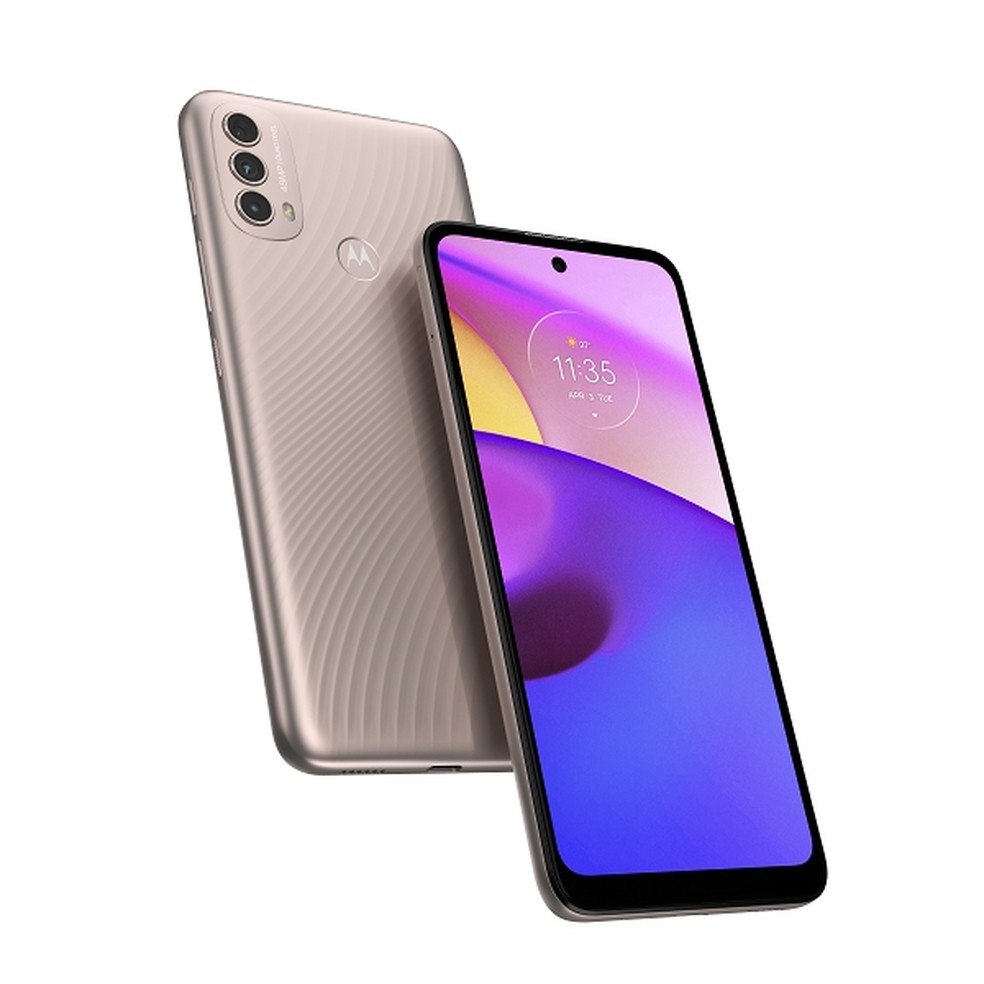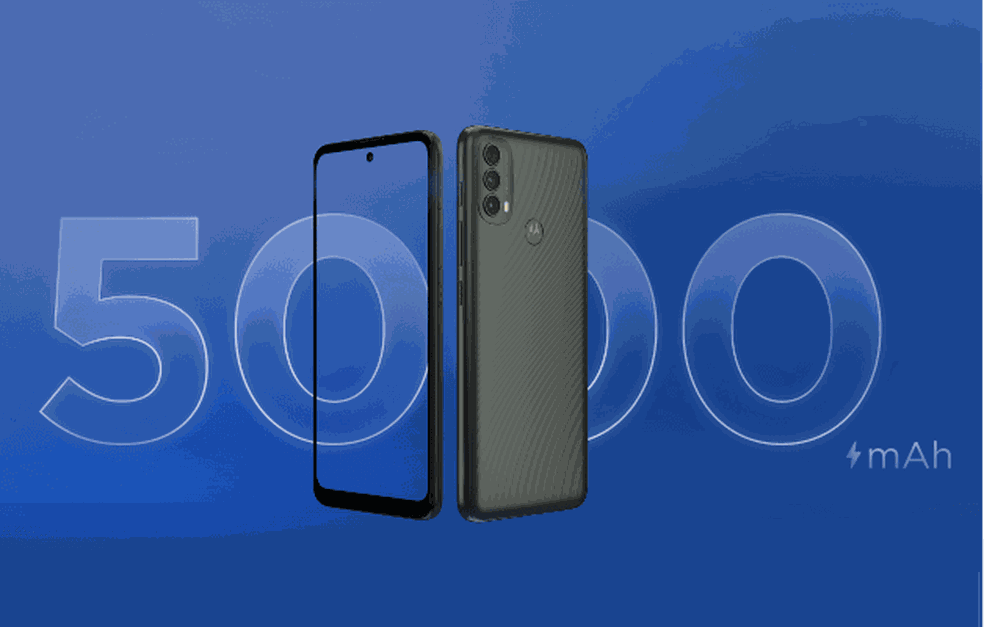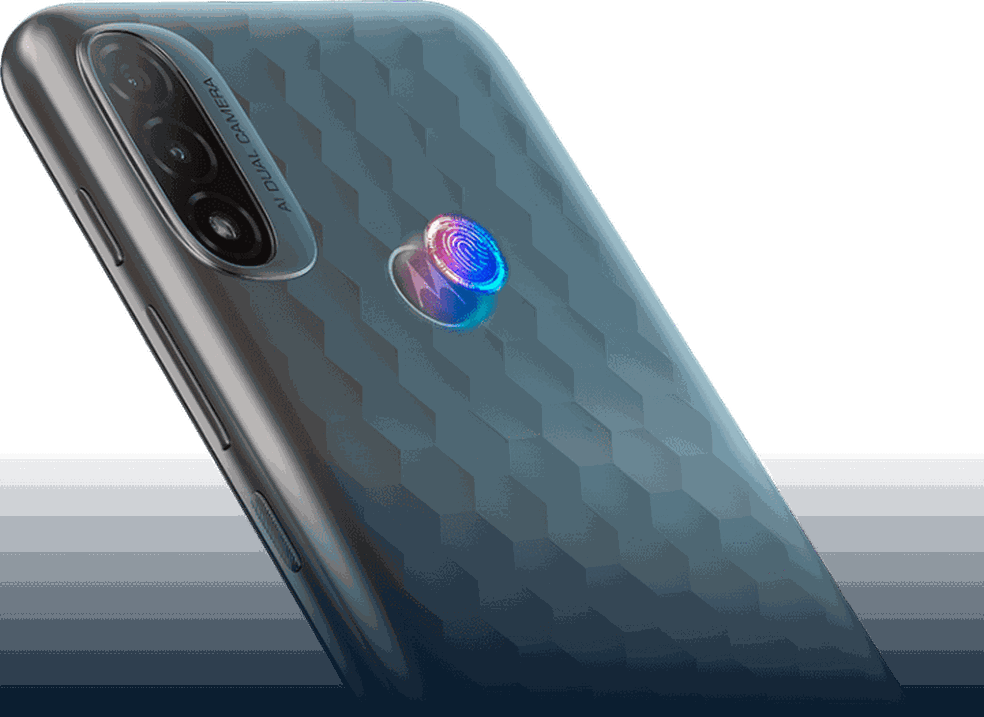Motorola has renewed its line of basic phones with the recently launched Moto E20 and Moto E40, which came to fill the space left by models like the Moto E7. Both have 6.5-inch displays but differ in almost all other specifications – and price. Check out their specifications below.
The Moto E20 arrived on the market for $245 with two color options: gray or blue. The Moto E40 arrived soon after, in October, for $329 and in graphite or pink.
Moto E20 vs Moto E40 Datasheet
| Moto E20 | Moto E40 | |
|---|---|---|
| Launch | September 2021 | October 2021 |
| Price | $245 | $329 |
| Screen | 6.5 inches | 6.5 inches |
| Screen resolution | HD+ | HD+ |
| Processor | Unisoc 1606 | Unisoc T700 |
| RAM | 2 GB | 4GB |
| Storage | 32GB | 64GB |
| Memory card | MicroSD | MicroSD up to 1TB |
| Main camera | Dual Camera: 13 MP, and 2 MP | Tri Camera: 48 MP, 2 MP, and 2 MP |
| Front camera | 5 MP | 8 MP |
| Operating system | Android 11 (Go) | Android 11 |
| Battery | 4,000 mAh | 5,000 mAh |
| Dimensions and weight | 185 x 75.6 x 8.5 mm; 185 g | 165.1 x 75.7 x 9.1 mm; 198 g |
| Colors | Gray and Blue | Graphite and Rose |
Screen and design
The screens of both Motorola entry-level devices feature 6.5 inches with HD+ resolution of 1600 x 720 pixels. Such a format is commonly seen in entry-level phones and does not give as much quality as that found in Full HD panels, for example.
Another aspect in common between the devices is the IPS LCD panel, which tends to deliver less vivid colors, especially black, which can look grayish.
However, in the case of the Moto E40, one of the specifications that can counter-balance the lower resolution numbers is the 90 Hz screen, a refresh rate that stands out among most models in the category, which have only 60 Hz, the rate present in the E20. This feature tends to give greater fluidity in image transition, although it consumes a bit more battery for this.

In design, the devices have some minor differences. While the Moto E40 has the camera located in a hole in the screen, the Moto E20 keeps the drop-shaped notch. Despite the efforts to make the most of the screen on the top, the bottom edge of both has accentuated prominence in the frame. The back, meanwhile, follows the same logic on both the E20 and E40 and lines up the lenses of the photo array vertically.
Camera
In terms of cameras, the E20 has a double set that includes a 13 MP primary sensor and a 2 MP depth sensor. This way, the phone is able to deliver records with a blurred background, providing the portrait mode effect.

The Moto E40 comes with an additional lens in the arrangement and adopts Quad Pixel technology, which combines four pixels in one to provide greater sensitivity in recording images taken in low-light locations. The triple camera has a 48 MP main sensor, as well as a macro and depth sensor with 2 MP each.
The highlight of the set goes to the main sensor, because of the number of megapixels compared to the E20, but also for the macro camera, which can bring more possibilities in capturing photos. With this technology, the smartphone can, for example, take close-up photos with rich detail.
As for the front cameras, the Moto E20’s sensor provides 5 MP, while the E40’s ensures 8 MP for selfies. One of the few aspects in common is the video recording, which in both cases is done in Full HD+ at 30 fps (frames per second).
Performance and Storage
Both devices use eight-core processors from Unisoc, which should deliver satisfactory results in performing basic everyday tasks without lagging. While the Moto E20 uses the T606 model, which reaches speeds of up to 1.6 GHz in conjunction with the ARM Mali-G57 graphics card, the E40 features the T700 version, with 1.8 GHz of maximum performance.

Based on the datasheet of the two phones, it can be said that the E40 tends to deliver faster responses. This emphasis is also repeated in the storage, since the first model guarantees at least 64 GB of data space, while the second reserves only 32 GB. The RAM also follows this logic by giving 2 and 4 GB to the respective devices. Both have microSD card support, which supports the memory expansion of smartphones.
Battery
The battery capacity demarcates a difference of 1,000 mAh between one phone and the other. In this case, the Moto E40 can deliver 5,000 mAh, while the E20 brings 4,000 mAh – which is also a significant number, since it should provide up to 40 hours away from the sockets, according to Motorola.

If the E20 provides almost two days of autonomy, the E40 can provide 76 hours of uninterrupted music, 14 of video playback, and up to 10 hours of web browsing. Although they differ in the component mAh, recharging relies on the same device, which is Motorola’s 10-watt fast charger.
Android Version
Both the E20 and E40 arrive with Android 11 in the factory settings. However, the Moto E20 runs the system in the Go Edition version, a lighter alternative that is generally used in some entry-level phones. Despite the brief distinction, both phones manage to offer features such as the single app permission, which limits app access to the microphone and camera, giving users greater privacy.
The gesture navigation also comes to Android 11 Go, as well as the notification bar with a part dedicated to messages. Still, on the subject of the operating system, it is worth saying that both phones tend to receive an update to the latest version, Android 12, which should start rolling out soon.
Additional Features
Among the available features, it is possible to mention the fingerprint reader, which is allocated on the back of both phones, more precisely on the Motorola logo. Another feature common to both models is the quick access button to Google Assistant, located on the side of the phone.

In terms of connectivity, they bring Wi-Fi support up to 2.4 GHz and Bluetooth 5.0, capable of transferring data twice as fast as the previous version of this technology, 4.2. The network used is 4G LTE, which means that neither device offers fifth-generation internet. The inputs include the P2 port, for headphones, and USB-C for the charger included in the box.
Pricing and Availability
The Moto E20 is available for purchase in the market for $245 with two color options: gray or blue. The Moto E40 is also available for $329 and in graphite or pink.
This post may contain affiliate links, which means that I may receive a commission if you make a purchase using these links. As an Amazon Associate, I earn from qualifying purchases.

